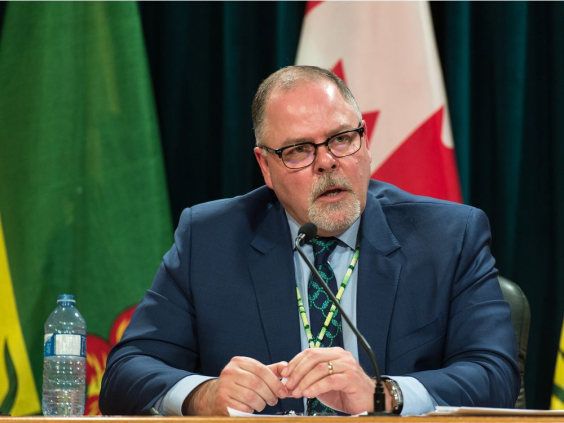The Saskatchewan Health Authority (SHA) will begin the second phase of its reopening plan on June 16.
The health authority had postponed some procedures and closed some clinics in its initial response to COVID-19. The phase two reopening will see surgical volumes increased to 65 to 75 per cent of pre-cOVID-19 levels and a target to return to 90 per cent of pre-COVID medical imaging levels.
The phase also includes the reopening of specialty clinics, such as various cardiac clinics, sleep disorder testing, eye centre testing and operations and additional cast clinics, with service levels varying by location and program.
Each service reintroduced must go through a rigorous process to confirm safety and readiness, including ensuring all COVID-related precautions are in place.
While services are coming back, they will look different than they did before COVID-19.
‘We are learning how to do that in different ways. The new ways require us to take special precautions around physical distancing, cohorting our staff, PPE usage and infection prevention and control,” SHA CEO Scott Livingstone said.
Services will resume while working through lists of backlogs by ensuring patients with the greatest needs have first access to care.
‘We know this has made for adjustments for patients and often results in longer waits and additional steps in the care process,” Livingstone added.
“Our goal is to return to pre-COVID capacity as soon as possible, but it’s not business as usual,” said Health Minister Jim Reiter.
“We require new safety measures to ensure protections are in place against COVID-19. As we move forward, we realize that currently-available beds in our health care system will be reduced. We also realize many experts in public health are concerned about a second wave of COVID-19 in the next few months. We certainly hope that won’t happen, but we want to be prepared if it does.”
The province said Wednesday that field hospitals in Saskatoon and Regina are coming along. They’re designed to handle an influx of patients should a second wave of COVID-19 hit the province.
“While we hope we never have to use them, these facilities will be our insurance policy, Reiter said, “allowing us to treat COVID-19 patents without having to scale back on surgeries and other health services.”
The facilities cost about $8 million, though officials said much of those costs are in the form of equipment that can be redeployed elsewhere if needed. The biggest expense would be staffing.
The province would have to see a combination of a significant number of acute care beds filled by non-COVID-19 patients and a major surge in COVID cases to trigger the activation of a field hospital.
“We know the volumes of patients we’ll be seeing are going to increase,” Livingstone said.
“With that, there is an increased risk of transmission and an increased (need) for effective protocols to keep people safe.”
That’s why each service will go through checks before it can restart, he said.
“As long as COVID is here, we will remain working through this balancing act and duality of the health care system — maintaining a pandemic response, reopening our health care services safety across the province and managing outbreaks as they evolve.”
Even after the pandemic is over, Saskatchewan might keep some of the changes.
“Some of these changes have resulted in improvements we believe will carry on and help transform the Saskatchewan health care system for years to come,” Livingstone said.
One example is in remote care. So far, the province has seen 122,000 people access medical appointments through virtual care.
“This is an enormous number over a very short period of time,” Livingstone added.
He said it has help[ed the province manage to keep people healthy while adjusting to the new COVID-19 world.
“We need to continue to be vigilant and abide by our principle to prepare for the worst while we aim for the best.”
Part of that is ensuring enough people get tested to track the virus. Testing numbers aren’t what the province hoped they would be. Livingstone said over the next few weeks, increased efforts will be made to communicate the importance of testing and to reduce the anxiety and stigma attached to getting tested.
“This is part of our ongoing efforts to identify and reduce barriers to testing,” Livingstone said, “which will be ongoing throughout our response to COVID-19 over the months to come.”


